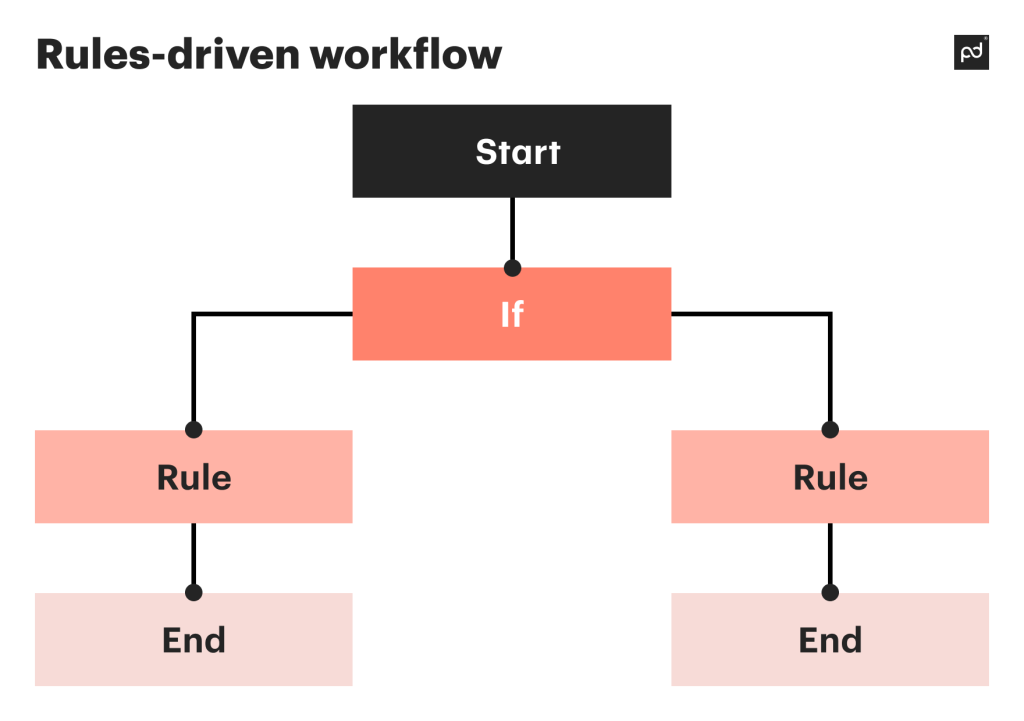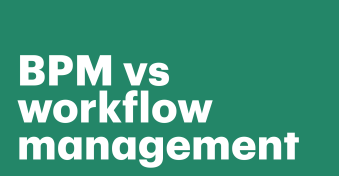In today’s fast-paced business world, efficient workflow management is more important than ever.
From small startups to large corporations, every organization has a set of processes that need to be followed to ensure smooth operations, successful expansion plans and maximum productivity.
However, keeping track of these processes and making sure they are executed correctly can be daunting.
That’s where workflow management comes in.
By implementing effective workflow management strategies, businesses can streamline their processes, reduce errors, and ultimately save both time and money.
In this article, we’ll dive into the world of workflow systems and explore different techniques and project management tools that can help you optimize your organization’s workflows for greater efficiency and success.
What is workflow management?
Workflow management is designing, executing, and monitoring workflows or tasks that must be completed to achieve a specific business goal.
It involves analyzing existing processes, identifying areas for improvement, and designing new processes that are more efficient and effective.
Workflow management is critical for businesses of all sizes and industries, as it helps organizations to streamline their processes and optimize their operations.
Workflow management also involves tracking each task’s progress and monitoring the overall performance of the workflow.
This allows organizations to identify potential bottlenecks or areas for improvement and make changes to optimize the workflow and improve efficiency.
For example, at PandaDoc, we focus on managing document workflow in order to help enable people to lead a more paperless life, and automate tedious documentation duties so they can focus on more strategic tasks within their companies.
Although workflow management is akin to both business process management and project management in certain respects, the three have very distinct characteristics.
Workflow management vs. project management
While there are some similarities between workflow and project management, they differ in several ways.
The first difference is that workflow management focuses on connecting a series of tasks within business processes.
In contrast, project management focuses on planning, tracking, and evaluating the success of those tasks.
Also, workflow management is more continuous and used by long-term teams.
Conversely, project management has defined start and end dates — meaning when a project is over, the team can disband.
Workflow management can involve multiple departments and individuals, while project management is typically confined to a specific project team.
| Workflow management | Business process management | Project management |
|---|---|---|
| Focuses on connecting a series of tasks within business processesMore continuous and used by short and long-term teamsInvolves multiple departments and individuals | Focuses on coordinating and optimizing the interactions between all resources within an organizationRequires a long-term commitment from the teamInvolves all layers of the company | Focuses on planning, tracking, and evaluating the success of tasksHas a defined start and end dateConfined to a specific project team |
Workflow management vs. business process management
Business process management (BPM) and workflow management are two related but distinct methods for managing and improving business processes.
Workflow management systems can coordinate the interactions between people and systems by incorporating human and application-driven tasks.
Systems for business process management coordinate and optimize interactions among an organization’s resources.
The primary objective of workflow management is to complete a single task in the shortest amount of time. In contrast, the goal of BPM is to reach full optimization of the enterprise as a whole.
Lastly, BPM systems are used to implement continuous improvement across all mission-critical enterprise processes, whereas workflow management systems typically only automate specific steps of these processes.
Types of workflows
Workflow management is a critical component of business process management, and organizations can implement different workflow management types to optimize their processes.
Here are some of the most common types of workflow management:
Sequential or linear workflow

In a sequential or linear workflow, tasks are performed in a predefined order, and each task needs to be completed before the next one can begin.
This type of workflow is suitable for simple, routine, and repetitive tasks that require a specific sequence of actions.
For example, the loan application approval process is a sequential workflow.
Different personnel must examine and approve the application when a customer applies for a loan.
First the loan officer, then the underwriter, and finally the lending manager or loan department head.
In this situation, the department head cannot approve (and won’t see) the document until the previous reviewers have approved the application.
State machine
This type of workflow is more complicated because of the non-linear directions involved.
In fact, activities are likely to go back and forth between stages.
Let’s suppose you need to have a document approved by the direct manager and the general manager.
If you are operating in a state machine model, the document can be signed in any order (as opposed to sequentially).

Simply put, it is the user who decides whether the direct manager or the general manager should sign the document first.
Rules-driven

Finally, the rules-driven workflow is based on a sequential workflow with predetermined rules.
It’s comparable to constructing a complete building by following a plan.
In short, the rules-driven workflow intelligently opens, closes, and assigns roles and tasks according to the firm’s rules.
This ensures that the right person is involved in the engagement or project at the right time.
Let’s consider a project’s task management as an example.
With a rules-driven workflow solution, you can create tasks, assign them to the right person, and set the specific deadline for them individually.
Thus, certain steps in the process can be carried out simultaneously as long as all the previously established rules have been followed.
What are the essential components of workflow management software?
Now that you know more about workflow management and the different types involved, let’s talk about the software that will allow your company to simplify tackling its various jobs and responsibilities.
This type of software allows the implementation and monitoring of a defined set of tasks and their sequencing.
As a result, it enables your various teams, like sales, HR, and legal, to collaborate by automating processes and defining distinct workflows for multiple applications and processes.
You should look for the following features in a platform when selecting workflow management software:
Modeling view
First of all, a proper workflow involves the correct design and planning of workflows.
This includes the identification of tasks, decision points, and potential bottlenecks in the process.
Workflow modeling is a crucial component of workflow management, as it provides a clear picture of the process to be optimized.
An excellent option to consider is monday.com.
This CRM software has many features that allow you to manage lead capture with easily customizable pipelines and user flows.
The software is capable of handling everything from sales pipelines and CRM data capture to project and task management due to the boards’ versatility.
Monitoring
Next, another essential component is workflow monitoring.
This involves tracking the progress of a workflow and ensuring that it is running smoothly by monitoring task completion times, identifying bottlenecks, and making adjustments to the workflow as necessary.
Reporting
Then, it is important to analyze the workflow data to identify trends and patterns.
This can provide valuable information about workflow performance and highlight areas for improvement.
Workflow reporting can be used to identify areas of inefficiency and provide real-time feedback to stakeholders.
PandaDoc allows you to create customized reports. Here’s how to do it:
- First, select “Workflow overview” to better understand your document funnel.
- Then select the filters for your analysis (you can choose a specific time period and workspace).
- For more in-depth analysis, select “Data analytics.”
- Select new filtering options (document creator, template, document name).
- Customize your report by adding or removing columns on the status of the documents (create, send, complete, etc.)
- You can now save your report and export it in CSV format.
Integration
This involves the integration of workflow management solutions with other business systems, such as ERP and CRM software.
This can help ensure that data flows seamlessly between different systems and that all parts of the business process are integrated and optimized.
Integrating your workflow software into your company’s tech stack will save considerable time, as it assists your team in using tools they already know, which allows you to be more efficient in implementing workflow software.
Optimization
Finally, another essential component of a good workflow is to develop a continuous improvement process to ensure maximum effectiveness and efficiency.
This involves monitoring the workflow, identifying areas for improvement, and making changes to the process to ensure that it is optimized for the best possible results.
Best practices for workflow automation
According to research, 90% of workers feel burdened by boring and repetitive tasks.
That’s why companies need to invest in workflow management systems.
In order to be sure of the success of adopting a new workflow management system, here are some best practices that will help you correctly choose the right tech:
Make a map of your current workflow
Before investing in an automated solution or creating complicated protocols for every task, it’s essential to visualize your company’s processes and identify priorities.
The first step is to consult with your team to determine the biggest frustrations in each department, the worst bottlenecks, and the most common workflows.
Then you need to map out your workflow.
This has the advantage of giving you an overview of how each step of the workflow is currently executed, enabling you to adapt and choose the most suitable solution going forward.
Consider both cloud-based and on-premise solutions
The cloud is a great way to interact with software tools remotely, bypassing the need to directly access info housed on the physical system that uses the software.
However, there may be drawbacks to using the cloud — for example, you need to be absolutely sure that proper security protocols are in place so that no information gets into the wrong hands.
Therefore, it’s critical to think about other backup options, such as on-prem data storage, in order to guarantee that your data and business procedures will be safe and securely backed up should a crisis occur.
For example, Conga has two cloud-based and on-site solutions, but it’s not as flexible in its setup as PandaDoc.
Choose a flexible software
While automating tasks saves you a lot of time, keep in mind that some protocols (e.g., compliance reports for high-risk information) change constantly.
Legitimate workflow software has appropriate structuring and document management capabilities, which means you can easily update changes in protocols or reporting requirements.
Final thoughts
Workflow management is a crucial tool for any organization looking to improve efficiency, reduce errors, and streamline business processes.
By automating and optimizing workflows, businesses can save time and resources, allowing them to focus on higher-value tasks.
That’s why PandaDoc remains one of the best workflow management solutions because of its automation features.
Companies will be able to reduce manual processes and avoid repetitive tasks by ensuring that tasks are performed in the right order and according to predefined rules.
Contact our team and ask for your demo to benefit from one of the top workflow management tools on the market today.
Disclaimer
PandaDoc is not a law firm, or a substitute for an attorney or law firm. This page is not intended to and does not provide legal advice. Should you have legal questions on the validity of e-signatures or digital signatures and the enforceability thereof, please consult with an attorney or law firm. Use of PandaDocs services are governed by our Terms of Use and Privacy Policy.


